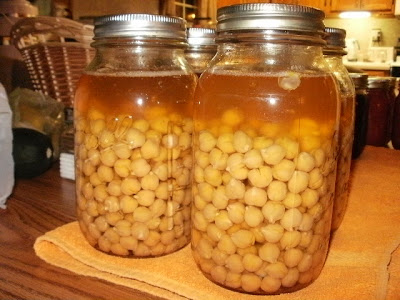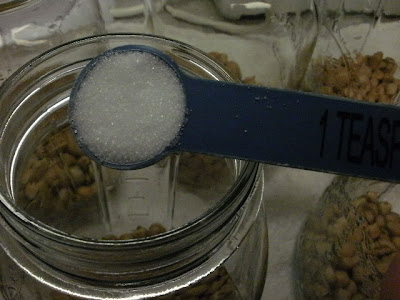 |
| Canned tomato sauce and canned dry beans. |
Disclaimer: This method is not approved by the USDA as a safe method for canning dry beans. It's my belief that soaking and precooking the beans is done to expand them before canning in order to make sure there is enough space in the jars for the beans and liquid. By adding only 1/2 cup of dry beans to the jar (without soaking first), and leaving 1 inch of head space when I add the liquid, there is adequate room for the beans to expand during canning. I would never ask or expect my readers to do something just because I do it. If this method does not feel safe or right to you, by all means, follow the USDA guidelines and soak the beans first. They are still more convenient than cooking beans each time you want some.
Dried beans are some of the easiest things to cook at home. Soak them or not (I usually don't), put them in a big pan with lots of water, some seasonings and maybe some ham or bacon, and simmer them for a few hours. Nothing to it!
They are so easy, though, that I sometimes forget about them and boil them
In the past, I prepared beans for canning by soaking them overnight then cooking them for a short time before hot-packing them into jars. Forget that! I recently read about canning them without soaking and par-cooking, and will be doing them like this from now on.
It's very easy. Just rinse dry beans or peas of any kind except lentils, then put 1/2 cup of them in each hot sterilized pint jar.
Add 1/2 teaspoon canning salt (optional) to each jar and other seasonings if desired (see below), pour in boiling water or broth, leaving a full 1 inch of head space. Give them a quick stir to release any air bubbles.
Adjust the two-piece lids and caps and process in a pressure canner at 10 pounds for 75 minutes for pints. Let the pressure release on its own, then remove from the canner. The beans will still be bubbling away and as often as not will seal before or right as they come out of the canner.
 |
| Finished quarts. |
If you prefer to use quart jars, double all the ingredients, but still leave 1 inch of headspace (I left 1-1/2 inches and it was a little too much) and process them for 90 minutes at 10 pounds of pressure. Be sure to check with your local extension office or the Ball Blue Book for adjustments in pressure if you live at high altitude.
Here are some of the combinations I've made:
- Garbanzo bean pints + 1/2 teaspoon canning salt + water
- Garbanzo bean quarts + 1 teaspoon salt + water
- Pinto bean pints + 1/2 teaspoon canning salt + 1/2 teaspoon dehydrated onion + 1/4 teaspoon garlic pepper blend + water
- Black (turtle) bean pints + 1/2 teaspoon salt + 1/2 teaspoon chipotle season (make your own with this recipe)
- Pinto bean pints + 1/2 teaspoon dehydrated onion + leftover seasoned broth from cooking a pork roast
Are you, like me, a bean lover? Have you ever canned beans at home?

